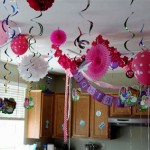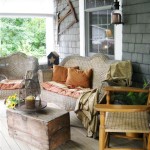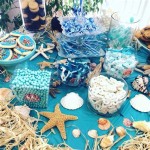Types of Cake Decorating Styles
Cake decorating is an art form that transforms simple baked goods into visually stunning and palatable creations. The field encompasses a broad range of techniques and styles, each with its unique characteristics and aesthetic appeal. Understanding the various types of cake decorating styles allows bakers and enthusiasts alike to choose the most suitable approach for different occasions and desired outcomes.
Buttercream Decorating
Buttercream decorating is arguably the most popular and versatile cake decorating style. It involves using buttercream frosting, a mixture of butter, sugar, and flavorings, to create a smooth, creamy canvas and intricate designs. Buttercream's pliable nature makes it suitable for various techniques, from simple frosting to complex piped decorations.
Buttercream frosting can be tinted with food coloring to achieve a wide spectrum of shades. Various consistencies can be achieved by adjusting the ratio of ingredients, allowing for different applications. For example, a thinner consistency is ideal for covering the cake, while a thicker consistency is more suitable for piping borders, flowers, and other decorative elements.
Several types of buttercream frosting are commonly used in cake decorating. American buttercream, known for its sweetness and easy preparation, is made with butter, powdered sugar, and milk. Swiss meringue buttercream, a smoother and less sweet option, requires heating egg whites and sugar before incorporating butter. Italian meringue buttercream, another meringue-based frosting, uses a hot sugar syrup to cook the egg whites. French buttercream, a rich and decadent option, utilizes a cooked sugar syrup and egg yolks.
Piping techniques are central to buttercream decorating. Different piping tips create varied designs, including rosettes, stars, shells, and leaves. These techniques allow for the creation of ornate borders, floral arrangements, and personalized messages on the cake's surface. Stencils can also be employed with buttercream to create precise and repeating patterns.
Texturing buttercream is another way to add visual interest to a cake. Techniques like combing, swirling, and using textured spatulas create unique patterns and depth. These methods are relatively simple but can significantly enhance the overall aesthetic of the cake.
Fondant Decorating
Fondant decorating involves using a sugar paste that can be rolled out and draped over a cake to create a smooth, seamless surface. Fondant provides a polished and professional look, making it a popular choice for wedding cakes and other special occasion desserts.
Fondant is typically made from sugar, water, gelatin, and glycerine. It is available in various colors and flavors, allowing for customization. Homemade fondant is also an option, offering greater control over ingredients and flavorings.
Working with fondant requires specific techniques. The cake must be properly prepared with a base layer of buttercream or ganache to provide a smooth and even surface. The fondant is then rolled out to the desired thickness and carefully draped over the cake, smoothing out any wrinkles or air bubbles.
Once the cake is covered in fondant, various decorative elements can be added. Cutouts, shapes, and figures can be created using cookie cutters or specialized tools. These elements can be attached to the fondant surface using edible glue or a small amount of water.
Sculpting with fondant is another advanced technique. Skilled decorators can create intricate three-dimensional figures and designs, transforming the cake into a work of art. This technique requires patience, precision, and a good understanding of sculpting principles.
Fondant can also be painted with edible paints to add color and detail. Airbrushing techniques can be used to create gradients and shading, adding depth and realism to the decorations. Dusting with luster dust or edible glitter can also add a shimmering effect.
Naked and Semi-Naked Cakes
Naked and semi-naked cakes represent a more rustic and minimalist cake decorating style. These cakes feature little to no frosting on the exterior, revealing the layers of cake and filling. This style emphasizes the natural beauty of the ingredients and provides a more casual and approachable aesthetic.
Naked cakes typically have no frosting on the sides, while semi-naked cakes have a thin layer of frosting that allows the cake layers to peek through. This requires careful baking and assembly, as the layers need to be even and visually appealing.
The fillings used in naked and semi-naked cakes are often visible, so it is important to choose fillings that complement the overall aesthetic. Fresh fruit, whipped cream, and berry compotes are popular choices. The fillings should be applied evenly and neatly to create a visually appealing contrast between the cake layers and the filling.
Decorations for naked and semi-naked cakes often focus on natural elements. Fresh flowers, berries, and herbs are commonly used to adorn the top of the cake. These elements add color, texture, and a touch of elegance to the simple design.
Dusting the cake with powdered sugar is another simple yet effective way to enhance the appearance of naked and semi-naked cakes. The powdered sugar adds a subtle sweetness and visual interest to the exposed cake layers.
The simplicity of naked and semi-naked cakes makes them suitable for various occasions, from casual gatherings to rustic weddings. These cakes are a celebration of natural ingredients and a departure from heavily decorated cakes.
Chocolate Decorating
Chocolate decorating utilizes various chocolate techniques to create stunning visual effects on cakes. Chocolate, in its melted or tempered form, becomes a versatile medium for creating intricate designs, sculptures, and textures.
Tempering chocolate is a crucial process for achieving a smooth, glossy finish. This involves heating and cooling the chocolate to specific temperatures to stabilize the cocoa butter crystals. Properly tempered chocolate will set with a snap and have a professional appearance.
Chocolate ganache, a mixture of chocolate and cream, is a fundamental component of chocolate decorating. Different ratios of chocolate and cream create varying consistencies, suitable for covering cakes, making drips, or piping decorations.
Chocolate curls are a classic and elegant decoration. These can be created by dragging a vegetable peeler or a specialized chocolate scraper across a block of tempered chocolate. The size and shape of the curls can be adjusted to suit the desired aesthetic.
Chocolate shards are another popular decorating technique. These are created by spreading melted chocolate on a sheet of acetate or parchment paper and allowing it to set. The chocolate is then broken into irregular shards, which can be arranged on top of the cake.
Creating chocolate sculptures is an advanced skill that requires patience and precision. Melted chocolate can be molded into various shapes, such as flowers, leaves, and abstract designs. These sculptures add a dramatic and artistic element to the cake.
Chocolate painting involves using melted chocolate as a medium for creating artwork on the cake's surface. This technique requires skill in brushwork and an understanding of color blending. Edible paints can also be combined with chocolate to create unique effects.
Royal Icing Decorating
Royal icing decorating is a traditional technique that utilizes a mixture of powdered sugar, egg whites (or meringue powder), and water to create intricate and detailed designs on cakes and cookies. Royal icing dries to a hard, smooth finish, making it ideal for creating delicate decorations that hold their shape.
The consistency of royal icing is crucial for different applications. A thinner consistency, known as flooding icing, is used to fill in large areas, while a thicker consistency, known as piping icing, is used for creating borders, details, and three-dimensional elements. The consistency can be adjusted by adding small amounts of water or powdered sugar.
Piping is the primary technique used in royal icing decorating. Different piping tips create varied designs, including lines, dots, scrolls, and floral patterns. The decorator controls the pressure applied to the piping bag to create consistent and precise lines.
Flooding is the process of filling in areas with a thin layer of royal icing. This technique is often used to create a smooth base for further decorations. The icing is applied using a piping bag or a squeeze bottle and then spread evenly with a scribe tool or a toothpick.
Wet-on-wet decorating involves applying different colors of royal icing to a flooded surface before it dries. This technique allows for the creation of intricate patterns and designs as the colors blend together subtly.
Brush embroidery is a technique that mimics the appearance of embroidered fabric. A line of royal icing is piped onto the surface and then brushed outwards with a damp paintbrush to create a feathered effect.
Lace piping involves creating delicate and intricate lace patterns with royal icing. This technique requires patience and a steady hand and is often used to create elegant borders and decorative elements.
Airbrushing Techniques
Airbrushing techniques utilize an airbrush, a device that sprays a fine mist of edible paint onto the cake surface, to create smooth gradients, shading, and intricate designs. Airbrushing allows for a level of detail and realism that is difficult to achieve with other decorating methods.
Edible airbrush colors are specially formulated for use on food products. These colors are available in a wide range of shades and can be mixed to create custom colors. It is important to use high-quality airbrush colors that are approved for food use.
Masking is a technique used to create sharp lines and defined areas in airbrushing. Stencils, templates, or even paper cutouts can be used to mask off specific areas of the cake, allowing for precise application of color.
Creating gradients and shading is one of the primary uses of airbrushing. By gradually increasing or decreasing the amount of color applied, decorators can create smooth transitions between different shades. This technique adds depth and dimension to the cake.
Adding textures and patterns with airbrushing can be achieved by using textured mats or stencils. The airbrush is used to apply color over the textured surface, creating a unique and visually interesting effect.
Creating realistic effects, such as wood grain or marble, is another advanced application of airbrushing. This requires a good understanding of color theory and blending techniques.
Airbrushing can also be used to add highlights and shadows to decorations, enhancing their three-dimensional appearance. This technique adds realism and depth to sculpted figures and other decorative elements.

7 Cake Decorating Techniques Every Pastry Chef Needs To Know Escoffier

Easy Decorating Tips Cake Techniques

Cake Decorating Wikipedia

25 Best Cake Decorating Ideas Easy And Simple Decorations

7 Cake Decorating Techniques Every Pastry Chef Needs To Know Escoffier

How To Frost Every Cake Method Mastery Epicurious
:max_bytes(150000):strip_icc()/yeh0415-cake-tips-8-ca2bff1d3a5a46acaeeaeb39678c6625.jpg?strip=all)
Cake Decorating Tips For Pro Level Cakes

25 Best Cake Decorating Ideas Easy And Simple Decorations

The 15 Common Cake Designs Names So You Know What To Ask For

30 Birthday Cake Decorating Ideas That Ll Steal The Show
Related Posts







